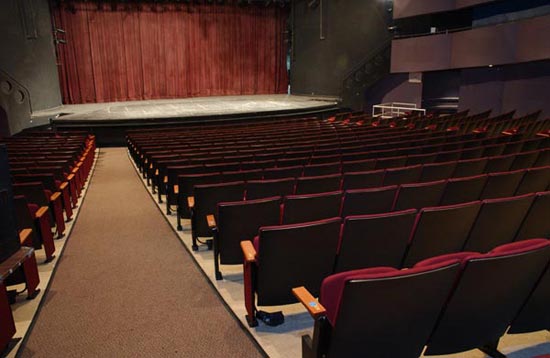Nagpur Entertainment : – Theatre is an art that presents the world aesthetically through dramatic action performed by actors before spectators. The basis of theatre is dramaturgy. At the same time it includes painting, sculpture, sometimes architecture, and sometimes cinema, music and dance. The synthetic nature of theatrical art makes it a collective art involving the efforts of the playwright, director, set designer, composer and actor.
Theatre Buildings, structures designed for theatrical performances and their audiences. Theatre is essentially the interaction between the actor and the audience. The relationship of actor to audience develops in parallel with the setting that the actor places himself in and the technological complexity of that setting. Primitive theatre and outdoor art forms lead to the audience encircling the actor or actors. This is still the natural form that an audience adopts today to watch informal open air performances anywhere in the world.
In the early stages of theatre the dramatist and the performer were often the same person. Subsequently however the ensemble became the main principle of the play. The director assumed the dominant position in the group creating a play. He was not only directed the actors but also interpreted the dramatist’s conception, translated the play into a stage performance and directed its whole course.
The “building material” of the theatre is the living person of the actor. It is through the actor that the playwright and the director realize their conceptions. He involves and confers theatricality on every object on the stage. The actor’s craft demands a specific kind of talent-observation, concentration, a skill in selecting and such expressive tools as good enunciation, into national range, mime plastic movement and gestures, etc.
An important feature of the theatre is that the creative act (the creation of the image by the actor) takes place before the eyes of the spectators. That gives the theatre tremendous influence on the minds of the audience. In the cinema the spectator sees the result of the creative process while in the theatre he sees the process itself. This goes long way to explain the fascination of the theatre. The actor alters every performance of the same role in keeping with his observations on life, his reflections and the reaction of the audience to his previous performances. At the same time the theatre has a smaller audience than the cinema because it cannot multiply its plays in hundreds of copies. A filmed play loses a great deal, particularly contact between actor and audience, the creative act before the audience.
Asian theatre developed independently of Western theatre from 2000 bc and grew out of religious ceremonies. The Hindu epic writings, the Mahabharata and Ramayana, formed the basis of theatre in India, Indonesia, and Malaysia, and are still used in wayang kulit shadow puppets today where the audience gathers around the dalang (puppeteer and narrator) to view the performance from in front or behind the screen.
In the 18th century Enlightenment ideas (Diderot, Lessing) pemetrated art and theatre becomes a vehicle for the social struggle of the third estate against feudalism. Actors tried to portray the social position of their characters; the theatre acquired realistic features. In the 19th century the theatre became more democratic and popular forms developed. There appeared theatre theatres for the populace: the “boulevarde” (Paris) and “small” (New York), and the theatres of the suburbs (Vienna). In the first half of the 19th century the romantic theatre became widespread.
The art of representation are the two principles of stage acting. The former is, today, primarily associated with intellectual theatre and the letter with domestic drama and, most important, the psychological theatre. Pushkin saw the main feature of the psychological theatre in the truth of passion, and the authenticity of feelings in the circumstances offered.
Directing the spectator’s emotions in a certain way, the theatre directs his thought. Brecht’s epic theatre is built on the rationalistic principles of the enlightenment theatre of Diderot as set out in the Paradox of the Actor. To Diderot, the actor is a great pretender who sheds tears not with the help of feeling but by an effort of the mind. He must be a cold and calm vehicle of the dramatist’s thought. Thought guides everything, including the feelings.
Paradoxically, the cinema brought back theatre to the theatre by closing the road to naturalistic imitation of reality, the photographic decor and stage behavior. The theatre cannot rival the cinema in the authenticity of reproduction, namely, intellectual analysis of life, philosophical reflection over the state of the world, and profound generalization about human nature.
Sanjay Wankar















